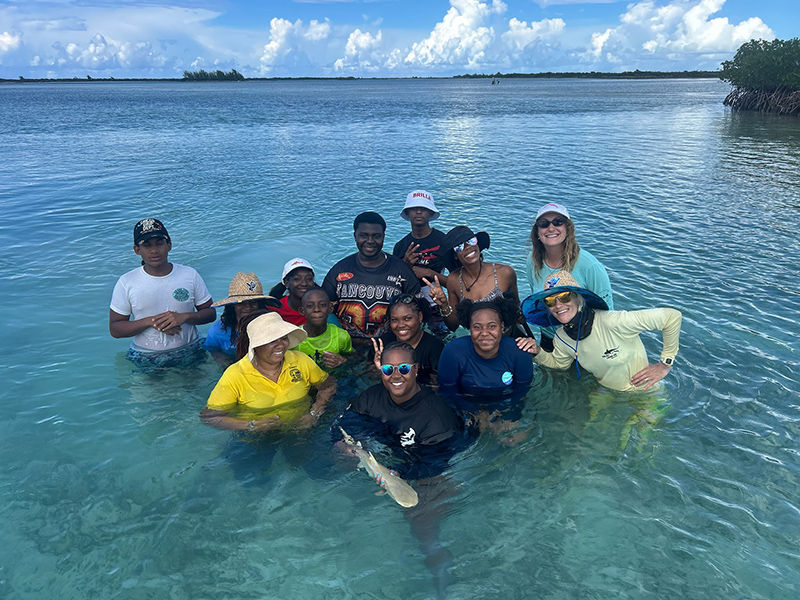Scientific Journal Article Review: Drones to Study Sharks
- Sharks4Kids

- Jul 27, 2021
- 3 min read
Author: Natasha Hynes
Introduction

Our ambassador Dr. Enie Hensel using a drone to study sharks in The Bahamas
Image Credit: Duncan Brake
If you tend to spend time at parks and beaches, chances are you’ve heard the characteristic whirring of a drone as it passes in the distance. Unmanned aerial vehicles, otherwise known as drones, have become very popular with recreational users over the last 10 years or so. In this time, drones have also become an invaluable tool for studying sharks.
Researchers have recently reviewed the many uses of drones in shark science. Drones have been used for everything from tracking movements to making density estimations! But before we talk about our fishy friends, first let's cover the basics:
For any typical drone operation, you need the following: a pilot, sometimes a visual observer, and a remotely piloted aircraft system (RPAS). The RPAS consists of a ground control station, a communication link, any payloads, and, of course, the drone. Drones typically exist in two forms: fixed wing and multirotor. Fixed wing drones look like mini airplanes and they're often launched by hand or catapult. Despite this added effort for take-off, they can stay in the air for longer and cover larger survey areas. Multi-rotor drones are what we typically think of when we hear the word “drone” – they’re the ones like the DJI Mavic Mini (figure 1). These types of drones don’t usually need help for take-off (some exceptions) and they’re much more responsive when they’re in the air. But, this more-advanced type of drone has shorter flight times and thus they cannot cover as large survey areas. Drones can even be used underwater. Underwater drones are otherwise known as autonomous underwater vehicles or remotely operated vehicles.
Drones in Shark Science
Hammerheads have been the subjects of drone studies since the 1980s. Researchers used drone footage to describe how ocean temperatures affected the abundance of hammerheads. They actually showed that their abundance in certain areas was seasonal! Hammerhead predation has also been observed via drone. When thousands of small blacktip sharks (Carcharhinus limbatus) aggregate near the shore in southeast Florida, they make for a popular hammerhead meal. Not only has their predatory behavior been caught on drone camera, but the avoidance behaviors of the blacktips have also been observed. Using drones allows researchers to study sharks without interfering in the sharks’ behavior.
Studying shark behavior using drones can have huge benefits. When a whale dies and the carcass is floating at sea, it is a huge attractant for sharks such as the elusive white shark. This gives researchers the opportunity to study shark behavior towards the carcass and also amongst the other patrons at this all-you-can-eat buffet. Using drone footage, researchers can also determine if a whale carcass that has washed ashore changes the behavior of sharks in the surrounding areas.
Conclusion
Drones are becoming popular in shark science for many reasons such as low relative cost and impact. They've been used to monitor populations, behavior, and contribute to conservation efforts. However, using drones for shark science - and around the ocean in general - can be difficult. In the future, improved sensors and methods will make drones even better tools to help us better understand and protect our fishy friends!
Butcher PA, Colefax AP, Gorkin RA, Kajiura SM, López NA, Mourier J, Purcell CR, Skomal GB, Tucker JP, Walsh AJ, Williamson JE, Raoult V. The Drone Revolution of Shark Science: A Review. Drones. 2021; 5(1):8. https://doi.org/10.3390/drones5010008





















